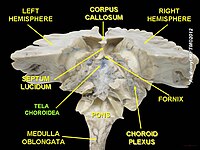
A comparative study of obstetric anal sphincter injuries in vaginal deliveries of twins and singleton pregnancies
Sign Up to like & getrecommendations! Published in 2018 at "Neurourology and Urodynamics"
DOI: 10.1002/nau.23727
Abstract: Increasing numbers of twin pregnancies necessitate investigation of the risk factors associated with obstetric anal sphincter injuries (OASIS). The aims of this study were to establish the incidence of OASIS, and compare women delivering twins… read more here.
Keywords: study obstetric; anal sphincter; sphincter injuries; comparative study ... See more keywords

Risk of obstetric anal sphincter injury with fundal pressure in second stage of labor: Transperineal ultrasound study
Sign Up to like & getrecommendations! Published in 2021 at "Neurourology and Urodynamics"
DOI: 10.1002/nau.24681
Abstract: Clinical management of the second stage of labor and effectiveness of preventive measures for severe perineal tears are controversial. The aim of this study was to evaluate the effect of using uterine fundal pressure during… read more here.
Keywords: pressure second; second stage; stage labor; fundal pressure ... See more keywords

Obstetric anal sphincter injury: a systematic review of information available on the internet
Sign Up to like & getrecommendations! Published in 2018 at "International Urogynecology Journal"
DOI: 10.1007/s00192-018-3753-9
Abstract: ObjectiveThere is no systematic evaluation of online health information pertaining to obstetric anal sphincter injury. Therefore, we evaluated the accuracy, credibility, reliability, and readability of online information concerning obstetric anal sphincter injury.Materials and methodsMultiple search… read more here.
Keywords: obstetric anal; information; anal sphincter; sphincter injury ... See more keywords

Risk factors for obstetric anal sphincter injuries at vaginal birth after caesarean: a retrospective cohort study
Sign Up to like & getrecommendations! Published in 2019 at "International Urogynecology Journal"
DOI: 10.1007/s00192-019-03978-x
Abstract: Introduction and hypothesisVaginal birth after caesarean (VBAC) is associated with an increased risk of obstetric anal sphincter injuries (OASIS). However, specific factors that influence the risk of OASIS at VBAC have not been studied, particularly… read more here.
Keywords: birth caesarean; risk; vbac; oasis ... See more keywords

Maternal outcomes in subsequent delivery after previous obstetric anal sphincter injury (OASI): a multi-centre retrospective cohort study
Sign Up to like & getrecommendations! Published in 2019 at "International Urogynecology Journal"
DOI: 10.1007/s00192-019-03983-0
Abstract: Introduction and hypothesis Women with a history of obstetric anal sphincter injury (OASI) are at increased risk of recurrence (rOASI) at subsequent delivery; however, evidence regarding the factors influencing this risk is limited. Furthermore, little… read more here.
Keywords: risk; anal sphincter; delivery; subsequent delivery ... See more keywords

Anal endosonographic assessment of the accuracy of clinical diagnosis of obstetric anal sphincter injury
Sign Up to like & getrecommendations! Published in 2021 at "International Urogynecology Journal"
DOI: 10.1007/s00192-021-05044-x
Abstract: Obstetric anal sphincter injuries (OASIS) are a common cause of maternal morbidity with an overall incidence in the UK of 2.9% (range 0–8%). They can cause a range of physical symptoms and psychological distress. This… read more here.
Keywords: obstetric anal; anal sphincter; accuracy clinical; injury ... See more keywords

Delivery after an obstetric anal sphincter tear
Sign Up to like & getrecommendations! Published in 2020 at "Archives of Gynecology and Obstetrics"
DOI: 10.1007/s00404-020-05550-1
Abstract: Purpose The present study aimed to assess the risk of obstetric anal sphincter injuries (OASIS) of a subsequent delivery after the previous OASIS in countries with low (Finland) and high rates (Norway and Sweden) of… read more here.
Keywords: anal sphincter; delivery; oasis; obstetric anal ... See more keywords

Language barrier as a risk factor for obstetric anal sphincter injury - a Case-Control Study.
Sign Up to like & getrecommendations! Published in 2021 at "Journal of gynecology obstetrics and human reproduction"
DOI: 10.1016/j.jogoh.2021.102138
Abstract: INTRODUCTION The incidence of grade 3-4 perineal tears, also known as obstetric anal sphincter injury (OASI), is reported to be between 0.5 and 2.5%. Beyond the medico-economic burden, the consequences of OASI on a woman's… read more here.
Keywords: risk; language barrier; obstetric anal; factor ... See more keywords

French guidelines for restrictive episiotomy during instrumental delivery were not followed by an increase in obstetric anal sphincter injury
Sign Up to like & getrecommendations! Published in 2022 at "Scientific Reports"
DOI: 10.1038/s41598-022-10379-6
Abstract: The objective was to assess the influence of the French guidelines in favor of a restrictive use of episiotomy on both episiotomy and obstetric anal sphincter injury (OASI) rates during instrumental delivery. It was aulticenter… read more here.
Keywords: anal sphincter; french guidelines; delivery; instrumental delivery ... See more keywords

Recovery from obstetric anal sphincter injury in a prospective cohort of first births.
Sign Up to like & getrecommendations! Published in 2022 at "American journal of perinatology"
DOI: 10.1055/a-1788-4642
Abstract: OBJECTIVE To identify risk factors for obstetric anal sphincter injuries (OASIS) for primiparous women who gave birth vaginally and to compare recovery by OASIS status in 3 domains: 1) physical health and functioning, 2) mental… read more here.
Keywords: health; anal sphincter; women oasis; physical health ... See more keywords

The Great Divide: Country of birth as a risk factor for obstetric anal sphincter injuries
Sign Up to like & getrecommendations! Published in 2018 at "Australian and New Zealand Journal of Obstetrics and Gynaecology"
DOI: 10.1111/ajo.12672
Abstract: Obstetric anal sphincter injuries (OASIS) can complicate up to 6% of births and are a major contributor to preventable maternal morbidity. Asian women have a risk of third and fourth degree perineal tears up to… read more here.
Keywords: risk; anal sphincter; sphincter injuries; great divide ... See more keywords